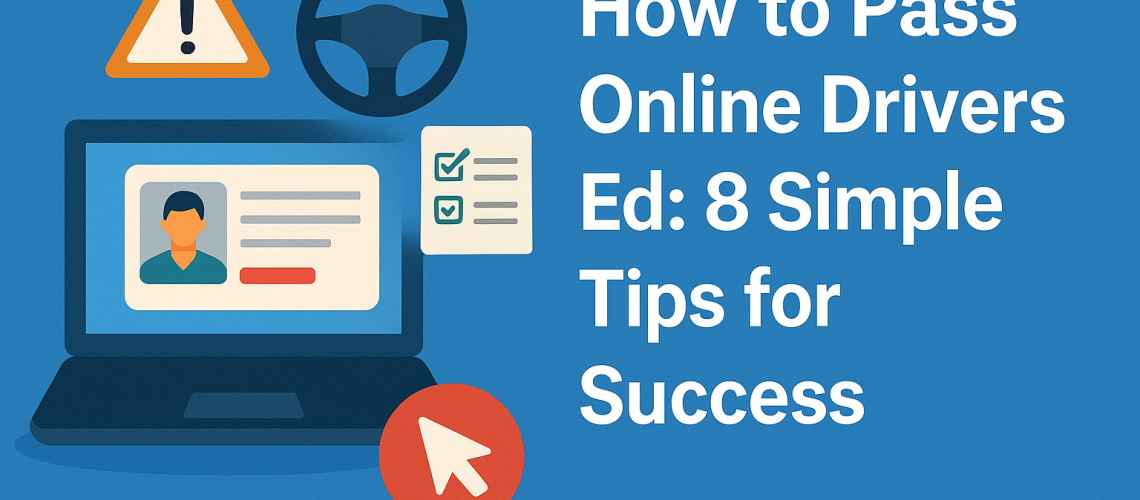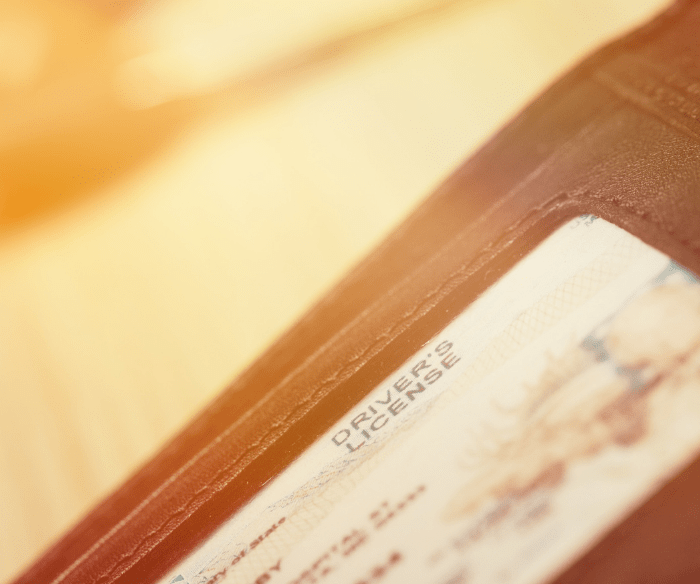Learning to drive is a major milestone for teens and adults, and online drivers ed has made the process more flexible than ever. Whether you are preparing for your learners permit, gearing up for your permit test, or getting ready to start driving with behind the wheel training, the right driver education plan can set you up for success. A state approved online driving course lets you study at your own pace while still meeting state requirements, giving you everything you need to get your permit and eventually your driver’s license.
If you are brand new to driver education, you can explore helpful background topics such as what is drivers ed or beginner road guidance like driving tips for beginners. These resources help you understand the rules, build driving skills, and focus on defensive driving techniques before you even step into a car.
This guide breaks down how to pass online drivers ed with confidence while preparing you to pass your permit test and move forward with your permit and license process.
What Is Online Drivers Ed?
Online drivers ed is a driver’s education course delivered through an online platform. It usually includes modules, short lessons, videos, animations, interactive quizzes, and a final exam that tests your understanding of the rules of the road and basic traffic laws.
Most online drivers education courses require about twenty five to thirty hours of driver education content. Some are state specific, meaning the information is based on your state’s guidelines. Many states require this education course before taking the dmv written test, scheduling your permit test, or moving into drivers training with an instructor.
For foundational learning, online drivers ed classes cover topics such as safe driving, defensive driving, road signs, lane changes, parking, right of way, and collision prevention. Many students take these drivers ed courses before practicing with a parent taught program or a traditional driving school.
1. Understand the Course Format
Every online drivers ed course has a structure. Most follow chapters or modules that end with multiple choice quizzes. You may need to test your knowledge before moving on. Some online drivers ed platforms add timers to ensure you spend the required time on each page.
At the end of the course online experience, you will take the final exam. This is a critical step in the online drivers ed course because you need to pass drivers ed before receiving your certificate of completion. Once you pass, the completion certificate may be emailed to you, mailed to your home, or sent directly to the dmv permit office depending on your state requirements.
2. Take Notes as You Go
Treat your online course like a real class. Writing down important terms helps you prepare for the written test and the official dmv exam. Definitions like blind spot, right of way, stop distance, or defensive driving moves will appear throughout the course online learning path.
Note any repeated rules of the road, common fines, or sign descriptions. These details often appear on the dmv test, driving permit test, or permit practice tests. Taking notes also strengthens your memory when you take the test later.
3. Do Not Skip the Videos or Animations
Modern online drivers ed relies heavily on video based teaching. Important material such as merging, four way stops, and freeway decision making is explained visually. Some videos contain embedded questions that boost retention.
Many driving lessons are easier to understand when you watch them, especially for learners who want everything you need to pass presented in a clear format. These videos reinforce defensive driving techniques that help you become a safe driver from the beginning.
4. Review After Each Module
Most online drivers ed classes tie their quizzes directly to the lesson you just finished. Reviewing each section before clicking through quizzes helps you avoid missing easy questions.
If you get an answer wrong, re read the explanation so you understand why. Some online driving platforms let you retake quizzes. Using this feature helps you test your knowledge more effectively and prepares you for the final exam and the dmv written test with more confidence.
5. Practice with Permit Test Apps or Flashcards
Even the best online driving course should be combined with additional study tools. Use permit practice tests, practice test apps, or flashcards that reinforce road signs, penalties, or state specific traffic laws.
These tools help you pass the driving questions on your permit test and prepare for test day at the official dmv. When your driver’s education course aligns with permit test practice, you will feel more prepared to get your license and keep a clean driving record long term.
For added driving knowledge, explore related defensive learning such as what is defensive driving or details about course timing like how long is defensive driving course.
6. Do Not Rush Through the Final Exam
Your final exam is the last step before you get your certificate of completion. Many platforms make this section open book. If allowed, revisit tricky modules, traffic laws, or rules of the road before starting.
Stay calm, read each question carefully, and rely on your notes. This test is designed to help you pass your permit test and prepare you for the dmv written test, so take advantage of every resource offered.
7. Ask for Help If You Are Stuck
Learning to drive can feel overwhelming, but support is always available. Ask parents, instructors, or older siblings to explain confusing concepts. Some state approved online drivers ed programs include live chat or instructor assistance.
A little help can boost your confidence so you do not fall behind. Support resources also make your online drivers ed experience more interactive and easier to complete.
8. Know What Happens After You Pass
Once you pass drivers ed online, you will receive your certificate of completion. This document proves that you finished a state approved driver’s education course. Depending on your state, the platform may submit your results directly to the dmv, dps, or other government agency.
Next steps usually include scheduling your permit test, taking a vision exam, finishing drivers training, and moving closer to your driver’s license. After you pass, you can begin the behind the wheel portion of learning to drive and practice defensive driving on real roads.
If you plan to take additional training, cost guides such as how much is driving school or schedules such as how often can you take defensive driving can help you understand your options.
Is Online Drivers Ed Hard?
Online drivers ed is designed to be manageable for all ages. Teens and adults can navigate the platform easily because the online course breaks concepts into small lessons. The structure teaches you defensive driving, safe driving strategies, rules of the road, and everything you need to get ready for the dmv test.
The key is completing modules without rushing, reviewing your notes, and using dmv practice resources. When you combine your online driving experience with permit test preparation, you will feel prepared on test day. Many students finish the course saying they passed my test with less stress than expected.
How Long Does Online Drivers Ed Take to Complete?
Most online drivers ed programs include twenty five to thirty hours of material. This length is based on your state’s requirements, so time may vary. Since these are state specific online drivers education courses, you can study at your own pace and stop or continue whenever needed.
Students can work through modules quickly or take extra time to understand the rules of the road before moving on. The flexibility of ed online learning means you will get everything you need to pass without feeling rushed.
Online driving also fits into busy schedules, helping you start driving sooner and move forward in your permit and license journey with confidence.





